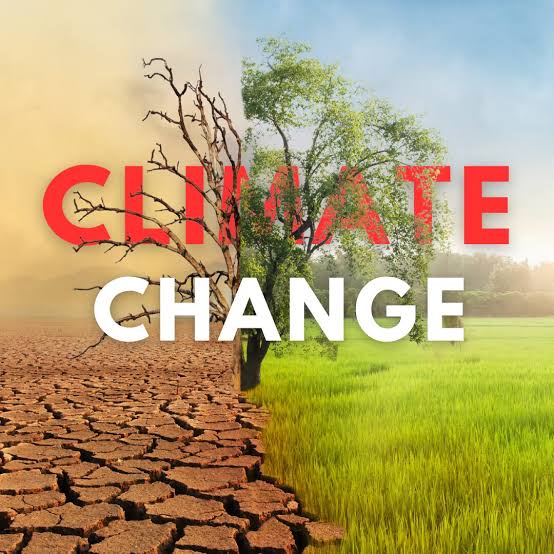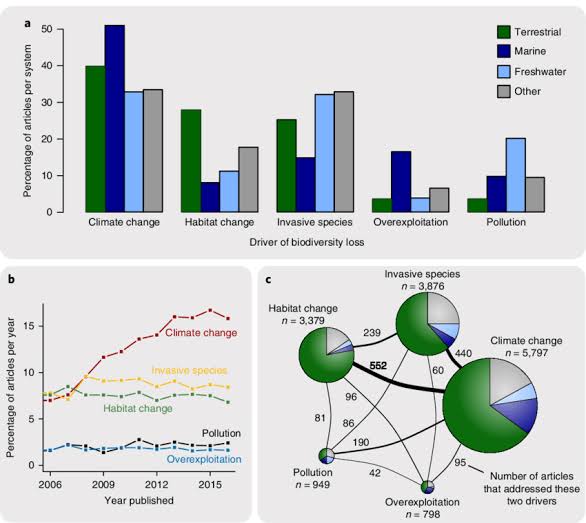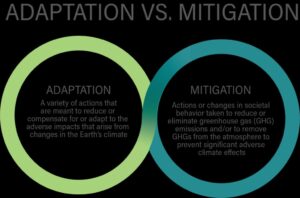
Climate change is undoubtedly one of the most pressing issues of our time, with far-reaching consequences that threaten the very foundation of our planet. The scientific consensus is clear: human activities, particularly the burning of fossil fuels and deforestation, are releasing massive amounts of greenhouse gases into the atmosphere, leading to a global average temperature increase of over 1°C since the late 19th century. This seemingly small increase in temperature has already triggered a cascade of devastating impacts on the environment, from melting glaciers and sea-level rise to droughts, heatwaves, and intense storms. The evidence is overwhelming, and the warning signs are clear: climate change is real, it’s happening now, and it’s imperative that we take immediate action to mitigate its effects. The future of our planet depends on it, and the window for action is rapidly closing. As we continue to pump greenhouse gases into the atmosphere, we’re not just threatening the health of our planet; we’re also putting the well-being of future generations at risk. The consequences of climate change are far-reaching, and they demand a unified response from governments, corporations, and individuals around the world. Moreover, climate change is not just an environmental issue; it’s also a social justice issue, as its impacts disproportionately affect vulnerable populations, including low-income communities, indigenous peoples, and small-island developing states. These communities often have limited resources and infrastructure to adapt to the changing climate, making them more susceptible to climate-related disasters and disruptions. The moral imperative to act on climate change is clear, and the economic benefits of transitioning to a low-carbon economy are undeniable. By investing in renewable energy, increasing energy efficiency, and promoting sustainable land use practices, we can create jobs, stimulate economic growth, and reduce greenhouse gas emissions. The question is no longer whether we can afford to act on climate change; it’s whether we can afford not to.
Rising Sea Levels and Coastal Erosion: A Growing Threat

Rising sea levels and coastal erosion are two of the most visible and destructive consequences of climate change. As the planet warms, glaciers and ice sheets melt, releasing massive amounts of freshwater into the oceans. This, combined with the thermal expansion of seawater, has led to a global sea-level rise of over 15 centimeters since 1900. The impacts of rising sea levels are far-reaching, from coastal erosion and flooding to saltwater intrusion into freshwater sources and the destruction of critical ecosystems like mangroves and coral reefs. Coastal communities, particularly in low-lying areas, are already experiencing the devastating consequences of sea-level rise, from frequent flooding and property damage to displacement and migration. In fact, according to the Intergovernmental Panel on Climate Change (IPCC), sea-level rise could displace up to 143 million people worldwide by 2050. The economic costs of sea-level rise are also staggering, with estimates suggesting that coastal flooding could cost the global economy up to $1 trillion annually by 2050. Moreover, the impacts of sea-level rise are not limited to coastal communities; they also have far-reaching consequences for global food security, human health, and economic development. For example, sea-level rise could contaminate freshwater sources, destroy agricultural land, and disrupt global supply chains, leading to food shortages, price increases, and social unrest. Furthermore, the health impacts of sea-level rise are also significant, from increased risk of waterborne diseases to mental health impacts associated with displacement and trauma. The need for urgent action to address sea-level rise and coastal erosion is clear. Governments, corporations, and individuals must work together to reduce greenhouse gas emissions, invest in coastal resilience and adaptation measures, and support climate change research and development. The window for action is rapidly closing, and the consequences of inaction will be severe. We must act now to protect coastal communities, preserve ecosystems, and promote sustainable development.
The Devastating Consequences of Extreme Weather Events
The devastating consequences of extreme weather events are becoming all too familiar in a world where the planet is warming at an unprecedented rate. From scorching heatwaves and droughts to intense storms and heavy rainfall, the frequency and severity of extreme weather events are increasing, leaving a trail of destruction and devastation in their wake. The evidence is clear: climate change is loading the dice in favor of more extreme weather events, and the consequences are being felt across the globe. Heatwaves, for example, are becoming more frequent and prolonged, with devastating impacts on human health, particularly for vulnerable populations such as the elderly, young children, and those with pre-existing medical conditions. In fact, according to the World Health Organization (WHO), heat stress is estimated to have caused over 150,000 deaths worldwide between 2000 and 2018. Droughts, on the other hand, are having a devastating impact on agriculture and food security, particularly in developing countries where millions of people rely on rain-fed agriculture for their livelihoods. The Horn of Africa, for example, is currently experiencing one of the worst droughts in decades, with over 15 million people facing severe food insecurity and millions more at risk of displacement. Moreover, intense storms and heavy rainfall are becoming more frequent, causing widespread flooding, landslides, and infrastructure damage. Hurricane Maria, which devastated Puerto Rico in 2017, is a stark reminder of the destructive power of extreme weather events, with estimated damages of over $90 billion and a death toll of nearly 3,000. The economic costs of extreme weather events are staggering, with estimated annual losses of over $500 billion worldwide. However, the human costs are even more devastating, with millions of people displaced, injured, or killed by extreme weather events each year. The need for urgent action to address the root causes of climate change and support climate resilience and adaptation efforts is clear. We must work together to reduce greenhouse gas emissions, invest in early warning systems and emergency preparedness, and support climate change research and development. The lives and livelihoods of millions of people depend on it.
The Alarming Rate of Biodiversity Loss

The natural world is facing an unprecedented crisis, with the alarming rate of biodiversity loss threatening the very foundations of ecosystems and the services they provide. Climate change, habitat destruction, pollution, overfishing, and overhunting are all taking a devastating toll on the world’s biodiversity, with many species facing extinction due to human activities. The consequences of biodiversity loss are far-reaching, from the disruption of food chains and the loss of ecosystem services to the decline of human health and well-being. The statistics are stark: according to the Intergovernmental Science-Policy Platform on Biodiversity and Ecosystem Services (IPBES), around 1 million animal and plant species are facing extinction, many within decades. This includes 40% of amphibian species, 33% of reef-building corals, and 30% of coniferous trees. The rate of species extinction is now tens to hundreds of times higher than the average rate over the past 10 million years. Moreover, biodiversity loss is not just an environmental issue; it also has significant economic and social implications. Ecosystems provide essential services, including air and water purification, soil formation, and climate regulation, which are vital for human well-being and economic development. The value of these ecosystem services is estimated to be around $125 trillion per year, more than twice the value of global GDP. Furthermore, biodiversity loss can also have significant impacts on human health, particularly in the context of zoonotic diseases, which are diseases that can be transmitted from animals to humans. The COVID-19 pandemic, which is believed to have originated from an animal source, is a stark reminder of the importance of preserving biodiversity and the natural world. The need for urgent action to address biodiversity loss is clear. Governments, corporations, and individuals must work together to reduce habitat destruction, pollution, and overfishing, and to promote sustainable land use practices, conservation efforts, and climate action. The future of the natural world and human well-being depends on it.
The Critical Role of Climate Change Mitigation

The climate crisis is one of the most pressing issues of our time, requiring immediate attention and action from governments, corporations, and individuals around the world. To address this crisis, it is essential to adopt a two-pronged approach that focuses on both climate change mitigation and adaptation. Climate change mitigation involves reducing greenhouse gas emissions and transitioning to a low-carbon economy, while climate change adaptation involves taking steps to prepare for and respond to the impacts of climate change. Both are critical to addressing the climate crisis, and both require urgent attention and action. On the mitigation side, the goal is to limit global warming to well below 2°C and pursue efforts to limit it to 1.5°C above pre-industrial levels. This requires a rapid transition to renewable energy sources, such as solar and wind power, and a significant reduction in energy consumption through energy efficiency measures. It also requires the development and deployment of carbon capture and storage technologies, as well as the electrification of transportation and industry. Moreover, climate change mitigation requires a fundamental transformation of the global economy, with a shift away from fossil fuels and towards a low-carbon, circular economy. This will require significant investments in clean energy, green infrastructure, and climate-resilient agriculture, as well as the development of new technologies and business models. On the adaptation side, the goal is to prepare for and respond to the impacts of climate change, from sea-level rise and more frequent natural disasters to droughts and heatwaves. This requires the development of early warning systems and emergency preparedness plans, as well as investments in climate-resilient infrastructure, such as sea walls, levees, and green roofs. It also requires the development of climate-resilient agriculture practices, such as agroforestry and conservation agriculture, as well as the promotion of climate-resilient water management practices. Furthermore, climate change adaptation requires a focus on vulnerability reduction and social protection, particularly for the poor and vulnerable, who are often the most affected by climate-related disasters. The need for urgent action on both climate change mitigation and adaptation is clear. The window for action is rapidly closing, and the consequences of inaction will be severe. We must work together to reduce greenhouse gas emissions, invest in climate-resilient infrastructure and agriculture, and promote climate-resilient water management practices. The future of our planet depends on it.
The Imperative of International Cooperation

The climate crisis is a global problem that requires a global response. No country, regardless of its size or economic power, can tackle this crisis alone. International cooperation and collective action are essential to addressing the climate crisis, and the need for urgent action has never been more pressing. The Paris Agreement, adopted in 2015, is a landmark achievement in the fight against climate change. It brings together almost 200 countries in a shared commitment to limit global warming to well below 2°C and pursue efforts to limit it to 1.5°C above pre-industrial levels. However, the Paris Agreement is only a starting point, and its success depends on the ability of countries to work together to implement its provisions and achieve its goals. One of the key challenges in addressing the climate crisis is the need for countries to balance their economic development goals with their climate change mitigation and adaptation commitments. Many developing countries, in particular, face significant development challenges, including poverty reduction, infrastructure development, and access to energy. However, these challenges cannot be addressed at the expense of the environment, and countries must find ways to balance their development goals with their climate change commitments. International cooperation and collective action can play a critical role in supporting countries in their efforts to address the climate crisis. This can involve the provision of financial and technical support, the sharing of knowledge and expertise, and the development of new technologies and innovative solutions. The Green Climate Fund, established under the United Nations Framework Convention on Climate Change (UNFCCC), is an example of an international mechanism that provides financial support to developing countries to help them address the climate crisis. Similarly, the Climate and Clean Air Coalition, a global partnership of countries, cities, and organizations, works to reduce short-lived climate pollutants, such as methane and black carbon, which have a significant impact on the climate. The need for international cooperation and collective action in addressing the climate crisis has never been more pressing. The window for action is rapidly closing, and the consequences of inaction will be severe. We must work together to reduce greenhouse gas emissions, invest in climate-resilient infrastructure and agriculture, and promote climate-resilient water management practices. The future of our planet depends on it.
The Role of Individuals, Communities, and Civil Society –

While governments and corporations have a critical role to play in addressing the climate crisis, individuals, communities, and civil society are also essential drivers of climate action and sustainable development. From making conscious lifestyle choices to advocating for climate policies and supporting climate-resilient development projects, individuals and communities can make a significant impact. One of the most effective ways individuals can contribute to climate action is by making sustainable lifestyle choices. This can include reducing energy consumption, using public transport or carpooling, eating a plant-based diet, reducing waste, and conserving water. Additionally, individuals can support renewable energy projects, invest in energy-efficient appliances, and promote sustainable agriculture practices. Communities can also play a vital role in driving climate action by promoting sustainable development practices, supporting climate-resilient infrastructure projects, and advocating for climate policies. For example, community-led initiatives can promote sustainable agriculture practices, support renewable energy projects, and develop climate-resilient water management systems. Civil society organizations, including non-governmental organizations (NGOs), community groups, and faith-based organizations, can also play a critical role in promoting climate action and sustainable development. These organizations can advocate for climate policies, support climate-resilient development projects, and promote sustainable lifestyle choices. Furthermore, civil society organizations can hold governments and corporations accountable for their climate commitments and actions, and promote transparency and accountability in climate decision-making. The impact of individual, community, and civil society action on climate change should not be underestimated. Collective action can drive significant change, from influencing government policies to promoting sustainable development practices. For example, the fossil fuel divestment movement, which began on college campuses in the United States, has grown into a global movement, with over $14 trillion in assets committed to divestment. Similarly, the Extinction Rebellion movement, which began in the United Kingdom, has spread to over 100 countries, promoting non-violent direct action to drive climate action. The power of individual, community, and civil society action on climate change is clear. We must work together to promote sustainable development practices, support climate-resilient infrastructure projects, and advocate for climate policies. The future of our planet depends on it.
The Urgent Need for Climate Education and Awareness
Climate education and awareness are essential components of any effort to address the climate crisis. As the world grapples with the challenges of climate change, it is imperative that individuals and communities have access to accurate and reliable information about the causes and consequences of climate change. Climate education and awareness can empower individuals and communities to take action, make informed decisions, and demand climate action from their leaders. Despite the urgency of the climate crisis, climate education and awareness remain woefully inadequate. Many individuals and communities lack access to accurate and reliable information about climate change, and climate education is often absent from school curricula. This lack of climate education and awareness has serious consequences, as individuals and communities are unable to make informed decisions about climate change and are often misinformed or misled by climate deniers and skeptics. Moreover, climate education and awareness are not just important for individuals and communities; they are also essential for policymakers and business leaders. Climate-informed decision-making is critical for developing effective climate policies and strategies, and business leaders must be aware of the climate-related risks and opportunities facing their companies. To address the urgent need for climate education and awareness, governments, civil society organizations, and businesses must work together to develop and implement climate education programs and initiatives. This can include integrating climate education into school curricula, developing climate education resources and materials, and supporting climate education and awareness-raising initiatives. Furthermore, climate education and awareness must be inclusive and accessible, reaching marginalized and vulnerable communities who are often the most affected by climate change. The benefits of climate education and awareness are numerous. By empowering individuals and communities to take action, climate education and awareness can help to build a global climate movement, drive climate policy and action, and support climate-resilient development. The urgent need for climate education and awareness cannot be overstated. We must work together to develop and implement climate education programs and initiatives, empower individuals and communities to take action, and build a global climate movement. The future of our planet depends on it.
The Critical Role of Technology and Innovation
Technology and innovation are critical components of any effort to address the climate crisis. From renewable energy and energy efficiency to sustainable transportation and carbon capture and storage, technological innovations are essential for reducing greenhouse gas emissions and mitigating the impacts of climate change. Moreover, technological innovations can help to drive economic growth, create jobs, and improve public health, making them a critical component of any sustainable development strategy. One of the most promising areas of technological innovation is renewable energy. Solar and wind power, in particular, have become increasingly cost-competitive with fossil fuels, making them a viable option for countries looking to transition to a low-carbon economy. In fact, according to the International Energy Agency (IEA), solar energy is now the cheapest source of electricity in many parts of the world. Energy efficiency is another critical area of technological innovation. From smart grids and smart buildings to energy-efficient appliances and lighting, technological innovations can help to reduce energy consumption and greenhouse gas emissions. Sustainable transportation is also an area of significant technological innovation. Electric vehicles, in particular, are becoming increasingly popular, with many countries investing heavily in electric vehicle infrastructure. Carbon capture and storage (CCS) is another critical area of technological innovation. CCS involves capturing the carbon dioxide emissions from power plants and industrial processes, and storing them underground. This technology has the potential to significantly reduce greenhouse gas emissions from the energy and industrial sectors. Moreover, technological innovations can also help to support climate change adaptation and resilience efforts. For example, climate-resilient infrastructure, such as sea walls and levees, can help to protect communities from the impacts of climate-related disasters. Climate-smart agriculture, which involves using climate-resilient crop and animal varieties, can also help to support food security and sustainable agriculture practices. The potential of technological innovation to address the climate crisis is vast. However, it is critical that governments, businesses, and civil society organizations work together to support the development and deployment of climate-friendly technologies. This can involve investing in research and development, providing incentives for the adoption of climate-friendly technologies, and supporting the development of climate-resilient infrastructure. The urgent need for technological innovation to address the climate crisis cannot be overstated. We must work together to support the development and deployment of climate-friendly technologies, and to ensure that the benefits of technological innovation are shared equitably by all. The future of our planet depends on it.
The Importance of Climate Justice and Equity
The climate crisis is not just an environmental issue, but also a social justice issue. The impacts of climate change are not felt equally by all, and the poorest and most vulnerable communities are often the most affected. Climate justice and equity are essential components of any effort to address the climate crisis, and involve ensuring that the benefits and burdens of climate action are shared fairly by all. One of the key principles of climate justice is the concept of “common but differentiated responsibilities.” This principle recognizes that countries have different levels of responsibility for causing climate change, and that they should take on different levels of responsibility for addressing it. Developed countries, which have historically been the largest emitters of greenhouse gases, have a greater responsibility to take action to reduce their emissions and support climate change adaptation and mitigation efforts in developing countries. Climate justice also involves recognizing the rights and interests of vulnerable communities, including indigenous peoples, women, and small-island developing states. These communities are often the most affected by climate change, and have valuable knowledge and expertise to contribute to climate action efforts. Furthermore, climate justice involves ensuring that climate action efforts do not exacerbate existing social and economic inequalities. For example, climate policies should not disproportionately burden low-income households or communities of color. Instead, they should be designed to promote equity and justice, and to support the most vulnerable members of society. The importance of climate justice and equity cannot be overstated. Without a commitment to justice and equity, climate action efforts will not be effective or sustainable. We must work to ensure that the benefits and burdens of climate action are shared fairly by all, and that the rights and interests of vulnerable communities are recognized and respected. This requires a fundamental transformation of our societies and economies, and a commitment to promoting justice, equity, and human rights for all. The future of our planet depends on it.
The Need for a Global Climate Governance Framework
The climate crisis is a global problem that requires a global response. However, the current global governance framework for addressing climate change is inadequate and ineffective. The Paris Agreement, which was adopted in 2015, is a significant step forward, but it is a voluntary agreement that relies on countries to set and meet their own emissions reduction targets. Moreover, the agreement does not provide a clear and robust framework for ensuring that countries meet their commitments, and it does not provide adequate support for developing countries to adapt to the impacts of climate change. To address the climate crisis, we need a more robust and effective global governance framework that can ensure that countries meet their emissions reduction commitments and provide adequate support for developing countries. This framework should include several key elements. First, it should establish a clear and binding emissions reduction target for all countries, based on their historical emissions and their economic and development circumstances. Second, it should establish a robust and transparent system for monitoring and reporting countries’ emissions reduction progress, and for holding countries accountable for meeting their commitments. Third, it should provide adequate financial and technological support to developing countries to help them adapt to the impacts of climate change and transition to a low-carbon economy. Fourth, it should establish a clear and effective system for resolving disputes and addressing non-compliance by countries. Finally, it should provide a framework for promoting sustainable development and poverty reduction, while also addressing the climate crisis. The development of a robust and effective global governance framework for addressing the climate crisis will require the active engagement and cooperation of all countries, as well as the participation of civil society, the private sector, and other stakeholders. It will also require a commitment to transparency, accountability, and equity, and a willingness to establish clear and binding rules and standards for addressing the climate crisis. The future of our planet depends on our ability to work together to address the climate crisis, and to establish a robust and effective global governance framework to support this effort.
The Urgent Need for Climate Action:
The climate crisis is one of the most pressing issues of our time, and it requires immediate attention and action from governments, businesses, and individuals around the world. The science is clear: human activities are causing the Earth’s temperature to rise at an unprecedented rate, with devastating consequences for our planet and its inhabitants. Rising sea levels, more frequent natural disasters, and changes in weather patterns are just a few of the many impacts of climate change that we are already experiencing. The good news is that there is still time to act, and that the solutions to the climate crisis are available and affordable. Renewable energy, energy efficiency, and sustainable land use practices are just a few of the many ways that we can reduce our greenhouse gas emissions and mitigate the impacts of climate change. However, the window for action is rapidly closing, and we must work together to address the climate crisis before it’s too late. Governments, businesses, and individuals all have a critical role to play in addressing the climate crisis. Governments must establish and enforce policies that support the transition to a low-carbon economy, such as setting ambitious emissions reduction targets, investing in renewable energy, and implementing carbon pricing mechanisms. Businesses must also take action to reduce their greenhouse gas emissions, by investing in clean energy, increasing energy efficiency, and adopting sustainable supply chain practices. Individuals can also make a difference, by making conscious choices about their energy use, transportation, and consumption patterns. We must also recognize that the climate crisis is not just an environmental issue, but also a social justice issue. The impacts of climate change are not felt equally by all, and the poorest and most vulnerable communities are often the most affected. We must work to ensure that the transition to a low-carbon economy is just and equitable, and that the benefits and burdens of climate action are shared fairly by all. The urgent need for climate action cannot be overstated. We must work together to address the climate crisis, and to ensure a sustainable and equitable future for all. The time for action is now, and we must seize this moment to create a better future for ourselves and for future generations.

The Power of Collective Action: How Individuals Can Work Together
The climate crisis is a complex and multifaceted issue that requires a collective response from individuals, communities, and organizations around the world. While individual actions are important, collective action is necessary to achieve the scale and scope of change needed to address the climate crisis. Collective action can take many forms, from community-led initiatives and grassroots movements to global campaigns and international agreements. One of the most powerful forms of collective action is people-led activism. Social movements, such as the climate strikes and Extinction Rebellion, have mobilized millions of people around the world to demand action on climate change. These movements have not only raised awareness about the climate crisis but also pushed governments and corporations to take action. Community-led initiatives are another important form of collective action. Community groups, cooperatives, and non-profit organizations are working together to develop and implement sustainable solutions to the climate crisis. For example, community-led renewable energy projects are providing clean energy to communities around the world. Collective action can also take the form of global campaigns and international agreements. The Paris Agreement, for example, is a global agreement that brings together almost 200 countries to address the climate crisis. Global campaigns, such as the Global Climate Strike, have also mobilized millions of people around the world to demand action on climate change. In addition to these forms of collective action, individuals can also make a difference by working together with their communities and organizations. For example, individuals can participate in community-led initiatives, join advocacy groups, and support organizations working on climate change issues. Individuals can also make conscious choices about their daily lives, such as reducing their energy consumption, using public transportation, and eating a plant-based diet. The power of collective action is undeniable. When individuals, communities, and organizations work together, they can achieve far more than they could alone. Collective action can drive systemic change, push governments and corporations to take action, and provide support and resources to individuals and communities affected by the climate crisis. The climate crisis is a global problem that requires a collective response. We must work together to address this crisis and create a sustainable and equitable future for all.
In Conclusion: The Climate Crisis Demands Immediate Action –
As we conclude this series of reflections on the climate crisis, we are reminded that the stakes have never been higher. The science is clear, the impacts are devastating, and the window for action is rapidly closing. Yet, even in the face of such overwhelming challenge, we remain hopeful. For we know that the climate crisis is not just a problem to be solved, but an opportunity to reimagine our world, to rebuild our economies, and to restore our planet. Let us rise to the challenge of this moment, with courage, with conviction, and with a commitment to justice and sustainability for all. The future of our planet depends on it.
As we move forward in our efforts to address the climate crisis, it is imperative that we recognize that this crisis is not just an environmental issue, but a symptom of a deeper set of issues, including inequality, injustice, and unsustainable economic systems. The climate crisis is a manifestation of the fact that our current economic systems are based on the principles of growth, profit, and exploitation, rather than on the principles of justice, equity, and sustainability. It is a manifestation of the fact that our societies are built on the principles of inequality and injustice, where the wealthy and powerful are able to reap the benefits of the Earth’s resources, while the poor and vulnerable are left to suffer the consequences of environmental degradation and climate change. Therefore, as we work to address the climate crisis, we must also work to address these underlying issues of inequality, injustice, and unsustainable economic systems. We must work to create a more just, equitable, and sustainable world for all, where the rights and dignity of all people are respected, and where the Earth’s resources are managed in a way that is sustainable and equitable. This will require a fundamental transformation of our societies and economies, and a commitment to justice, equity, and sustainability. It will require that we rethink our values and our way of life, and that we work to create a world that is more just, more equitable, and more sustainable for all.

